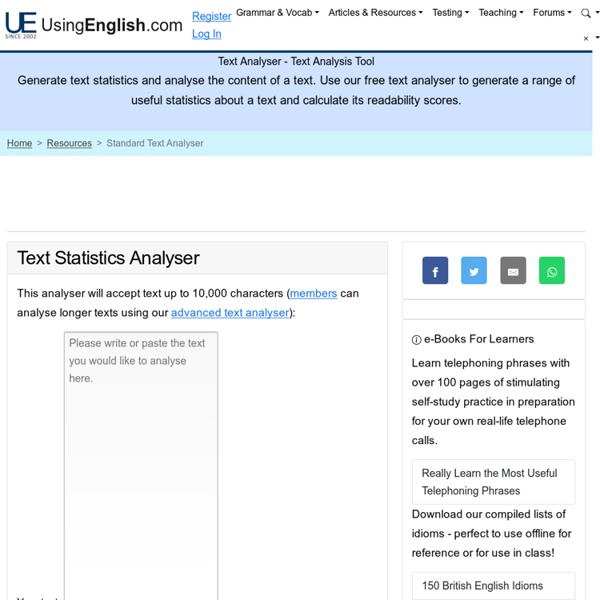



Word Counter Startseite A. Helmke, T. Helmke, G. Unterrichtsdiagnostik mit EMU Evidenzbasierte Methoden der Unterrichtsdiagnostik Version 7.0 (10.10.2018) EMU steht für Evidenzbasierte Methoden der Unterrichtsdiagnostik. Das auf www.unterrichtsdiagnostik.de frei verfügbare Material umfasst die vorliegende Broschüre sowie weiterführende Texte und Verweise auf Internetseiten Instrumente für die Unterrichtsbeobachtung Software für die Visualisierung der Ergebnisse einen Powerpoint-Foliensatz für Präsentationen zu EMU eine Sammlung häufig gestellter Fragen („FAQ“) zu EMU Unterrichtsvideos (mit Auswertungsdaten für Ausbildungs- und Trainingszwecke) Übersicht Hier finden Sie nähere Informationen zum Autorenteam und zur Vorgeschichte von EMU. Hier geht’s direkt zu den Fragebögen Hier geht’s direkt zu den Auswertungsprogrammen und den Manualen. Hier geht’s direkt zu der im Text zitierten Literatur 1. Bei Diagnose denkt man im alltäglichen Sprachgebrauch häufig zunächst an die Medizin. 2. 3. 4. 5. eine Unterrichtstunde. 6. 7.
Corpus Linguistics: Investigating Language Structure and Use (Cambridge Approaches to Linguistics): Books: Douglas Biber,Susan Conrad,Randi Reppen 16 Online Tools to Make Your Writing Better 8 min read We're halfway through November, which means many writers are currently deep into the NaNoWriMo process. Others are focusing on 30-day blogging streaks to build the habit of regular writing. Known is a great platform for sharing articles, blog posts, or daily stories. Tools for Getting the Words Down The retro Writer interface Writing on a computer can be hard. CalmlyWriter CalmlyWriter supports distraction-free writing by giving you a minimal blank space to type in the browser. Use CalmlyWriter if you need a blank space online to get your thoughts down. Writer Maybe you're old school. Use Writer if you want to customize your writing space. Quabel Quabel is a complete online writing space for individuals who want to create an account and save their work online. Use Quabel if you want an account for writing and saving your work. Write.app Write.app is another option if you want to create an account online for writing. Ilys Use Ilys if you need help killing your internal editor. Grammark
Bloom's Taxonomy Revised - The Second Principle ©Leslie Owen Wilson (2020, 2019, 2016, 2013, 2005, 2001) Contact Leslie A PDF Version of this page A succinct discussion of the revisions to Bloom’s classic cognitive taxonomy by Anderson and Krathwohl and how to use them effectively Who are Anderson and Krathwohl? Here in the United States, from the late 1950s into the early 1970s, there were attempts to dissect and classify the varied domains of human learning – cognitive (knowing, or head), affective (emotions, feelings, or heart) and psychomotor (doing, or kinesthetic, tactile, haptic or hand/body). While all of the taxonomies above have been defined and used for many years, there came about at the beginning of the 21st century in a new version of the cognitive taxonomy, known commonly before as Bloom’s Taxonomy. The original cognitive domain was described and published in 1956. The affective domain was not categorized until 1964 and as David Krathwohl was the lead author on this endeavor, it should bear his name, not Bloom’s.
Corpora in Applied Linguistics (Cambridge Applied Linguistics): Books: Susan Hunston Dr. Rod Ellis: TESOL Written Corrective Feedback - matbury.com Professor Rod Ellis, gave a presentation which is available on YouTube.com. In it, he focuses on written corrective feedback. I’ve written a basic summary below. Get a drink, a snack, your notebook, make yourself comfortable and enjoy an allusive, informative explanation of the current state of affairs regarding written corrective feedback; the types and strategies, what we know, what we don’t know and what we should do. Running time: 1:09:08 Why do we give written corrective feedback? To enable learners to revise their own writing, i.e. produce a better second draftTo assist learner to acquire correct English A Typology of corrective feedback types Strategies for providing corrective feedbackHow learners respond to the feedback Written corrective feedback strategies 1. Advantage – Provides learners with explicit guidance about how to correct their errors. * The effect of focused written corrective feedback and language aptitude on ESL learners. 2. Advantages Disadvantages 4. 1. 2. 5. 6.
Kooperative Kommunikation als Schlüsselqualifikation • 3MinutenCoach Kommunikation dient dem Austausch von Informationen. Im beruflichen Umfeld zumindest scheint das häufig nicht zu klappen. Ein Großteil der Konflikte beruht auf Missverständnissen oder Missinterpretationen. Woran liegt das? Unsere Kommunikation ist der beste Indikator dafür, wie kooperationsbereit und kooperationsfähig wir sind. Sind Sie noch im Dialog? Auf der Basis dieses Kommunikationsverhaltens lernen wir erst später, dass Zusammenleben andere Kommunikationsformen erfordert. Was das Dialogfeld mit Fußball zu tun hat Stellen wir uns dieses Dialogfeld doch einfach einmal bildlich vor, z.B. als Fußballfeld. „Sowohl als auch“ statt „entweder-oder“ Die Grundlage dafür ist die ko-zentrierte Haltung. „Probleme kann man niemals mit derselben Denkweise lösen, durch die sie entstanden sind Albert Einstein Der kreative Lösungsraum Drei Schritte für ein kooperatives Gespräch Woran erkennen wir, dass wir nicht mehr im Dialog sind? Schritt 1: Das eigene Gesprächsverhalten überprüfen. Über die Autorin: